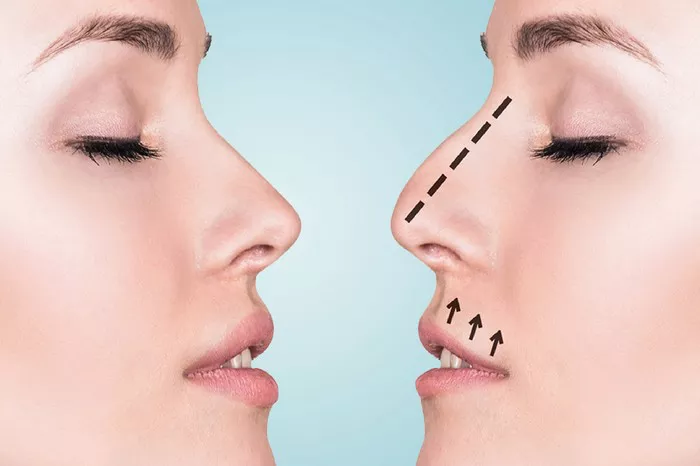Rhinoplasty, commonly known as nose surgery or a nose job, is a surgical procedure performed to reshape or reconstruct the nose. Like any surgical procedure, rhinoplasty involves a recovery period during which you may experience various symptoms and side effects. One common issue that many patients face after rhinoplasty is nasal congestion. In this article, we will discuss why nasal congestion occurs after rhinoplasty, how long it typically lasts, and strategies to manage congestion during the recovery process.
Understanding Nasal Congestion after Rhinoplasty
Nasal congestion refers to a feeling of stuffiness or blockage in the nasal passages. It occurs as a result of the swelling and inflammation that typically accompanies rhinoplasty. During the surgery, your surgeon manipulates the nasal tissues and cartilage, leading to an immune response in the body. This immune response triggers swelling, which can temporarily obstruct the nasal passages and cause congestion.
Additionally, nasal packing or splints may be placed inside the nose immediately after surgery to provide support and aid in the healing process. These packing materials can also contribute to a sense of congestion and obstruction in the nose.
How Long Does Congestion Last?
The duration of nasal congestion after rhinoplasty varies from person to person and can depend on several factors, including the extent of the surgery, individual healing characteristics, and adherence to post-operative care instructions. In general, nasal congestion following rhinoplasty can last for several weeks, but the intensity and duration of congestion typically diminish gradually over time.
During the initial stages of recovery, it is common to experience more pronounced nasal congestion due to significant swelling and the presence of nasal packing. As the swelling subsides and the healing process progresses, the congestion should gradually improve.
Tips for Managing Nasal Congestion
While nasal congestion is a normal part of the rhinoplasty recovery process, there are several strategies you can employ to alleviate discomfort and promote healing:
- Follow Your Surgeon’s Instructions: It is essential to strictly follow the post-operative care instructions provided by your surgeon. These instructions may include specific guidelines for managing congestion, such as using nasal sprays, saline rinses, or prescribed medications. Adhering to these instructions can help minimize congestion and promote healing.
- Nasal Saline Rinse: Saline rinses, also known as nasal irrigation or nasal lavage, can help relieve nasal congestion by flushing out mucus, debris, and reducing swelling. Use a sterile saline solution or a saline rinse kit as directed by your surgeon or healthcare provider.
- Elevate Your Head: Sleeping with your head elevated can help reduce nasal congestion. Prop yourself up with an extra pillow or use a wedge pillow to keep your head elevated during sleep. This position promotes better drainage and reduces swelling.
- Humidify the Air: Dry air can exacerbate nasal congestion. Use a humidifier or vaporizer in your room to add moisture to the air and prevent dryness in your nasal passages. Be sure to keep the humidifier clean to avoid the growth of bacteria or mold.
- Avoid Irritants: Minimize exposure to irritants that can worsen nasal congestion, such as smoke, strong odors, and environmental pollutants. These irritants can further inflame the nasal passages and prolong congestion.
- Gentle Nasal Massage: With clean hands, gently massage the sides of your nose in a circular motion. This can help stimulate blood flow, reduce swelling, and alleviate congestion. However, be cautious not to apply excessive pressure or manipulate the surgical area.
- Stay Hydrated: Drinking an adequate amount of water can help thin the mucus and promote healthy nasal function. Stay hydrated throughout the day by drinking water and consuming hydrating foods.
- Avoid Forceful Blowing of the Nose: Blowing your nose forcefully can disrupt the healing process and prolong congestion. If necessary, gently blow your nose with caution or use nasal saline spray to help loosen mucus.
- Patience and Rest: Remember that the healing process takes time, and nasal congestion is a normal part of that process. Be patient and allow your body to recover at its own pace. Engage in activities that promote rest and relaxation to aid in the healing process.
When to Consult Your Surgeon
While nasal congestion is common after rhinoplasty, there are instances when you should contact your surgeon:
- If you experience severe or worsening nasal congestion that is accompanied by severe pain, excessive bleeding, or other concerning symptoms.
- If you have difficulty breathing through your nose that persists beyond the expected recovery period.
- If you have concerns about your recovery or questions regarding managing congestion.
Your surgeon is the best resource for addressing any specific concerns or complications related to your rhinoplasty recovery.
Conclusion
Nasal congestion is a normal part of the recovery process after rhinoplasty. While it can be uncomfortable, it is usually temporary and improves gradually over time. Following your surgeon’s instructions, using nasal saline rinses, keeping your head elevated during sleep, humidifying the air, and avoiding irritants can help manage congestion and promote healing. Remember to be patient and allow your body the necessary time to heal. If you have any concerns or questions about your recovery or nasal congestion, consult with your surgeon for guidance and support.

